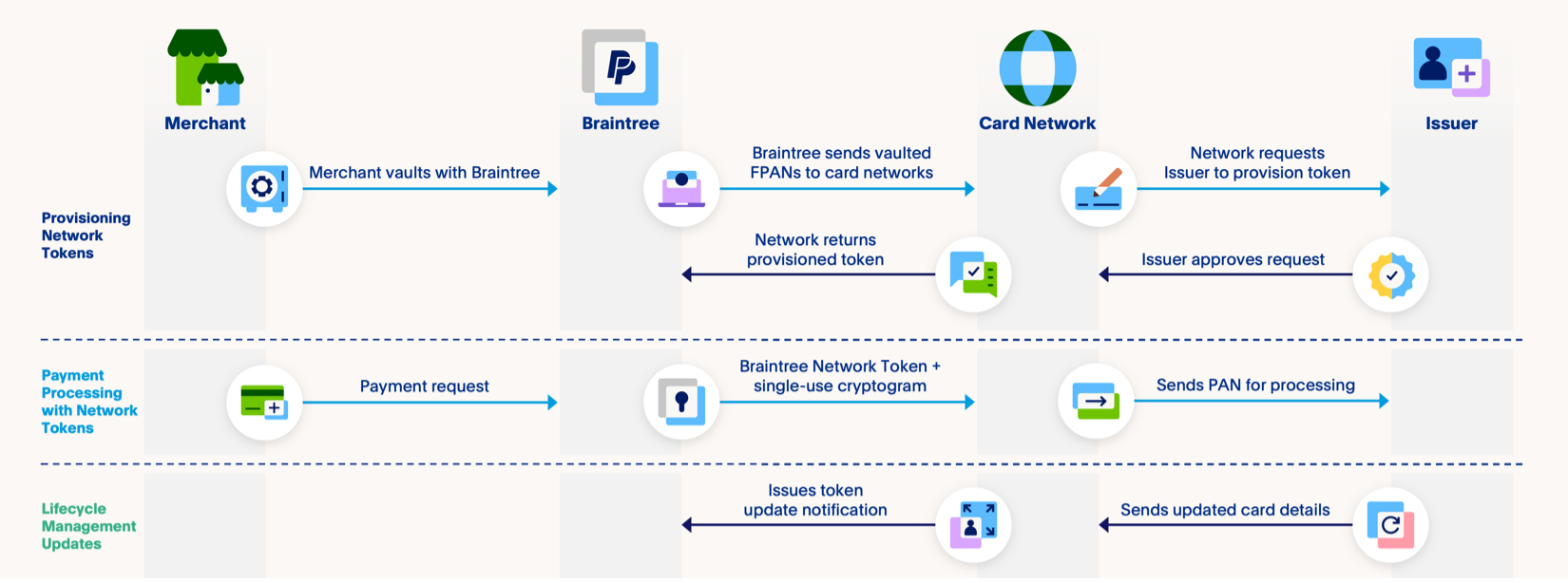Network Tokens
How it Works

To create a network token, Braintree—acting as a Token Service Provider/Acquirer—sends a card (the PAN) stored in a merchant's Braintree Vault to a card network such as Visa or Mastercard. The card network will then provision a network token which is sent back to Braintree and stored in the merchant's vault. Network Tokens are specific to a card and one merchant; so no one token can be used at more than one merchant.
Once a Network Token is provisioned, it can be used to process a transaction. When a customer goes to checkout, Braintree sends the token from a merchant's vault along with a one-time use cryptogram to the card network who then will exchange the token with a PAN and send to the Issuer to process the transaction.
Unlike a traditional PAN, a Network Token can receive Lifecycle Management (LCM) Updates. These updates occur whenever a card is reissued, stolen, or lost. Traditionally, whenever a card number was updated, the burden was on the cardholder to update their card details before using the card. With Network Tokens, any update from a card issuer is passed through the card network and to Braintree, and the card details are updated in the merchant's Braintree vault. Now, when a cardholder goes to checkout, the updated card/token is ready to use and can help avoid a failed transaction which may lead to churn or cart abandonment.
Network Token-issuing card networks have their own set of eligibility criteria when they receive a request for card tokenization. Card networks will sometimes run a $0 verification before issuing a network token to ensure the card is active and not fraudulent, similar to regular card verifications run at the time of vaulting. These $0 verifications may show up in the cardholder's credit card statement but are not monetary charges and do not affect merchant operations in any way. If a card is sent to the card networks to be tokenized, Braintree does not have any control over whether or not a $0 verification is run on the card as part of tokenization.
Coming soon, merchants will also be able to use cards not stored in their Braintree vault to use and process with Network Tokens. This will enable merchants who tokenize cards with another Payment Service Provider (PSP) or who vault Network Tokens themselves to use their existing Network Tokens but process with Braintree.
Next Page: Getting Started →